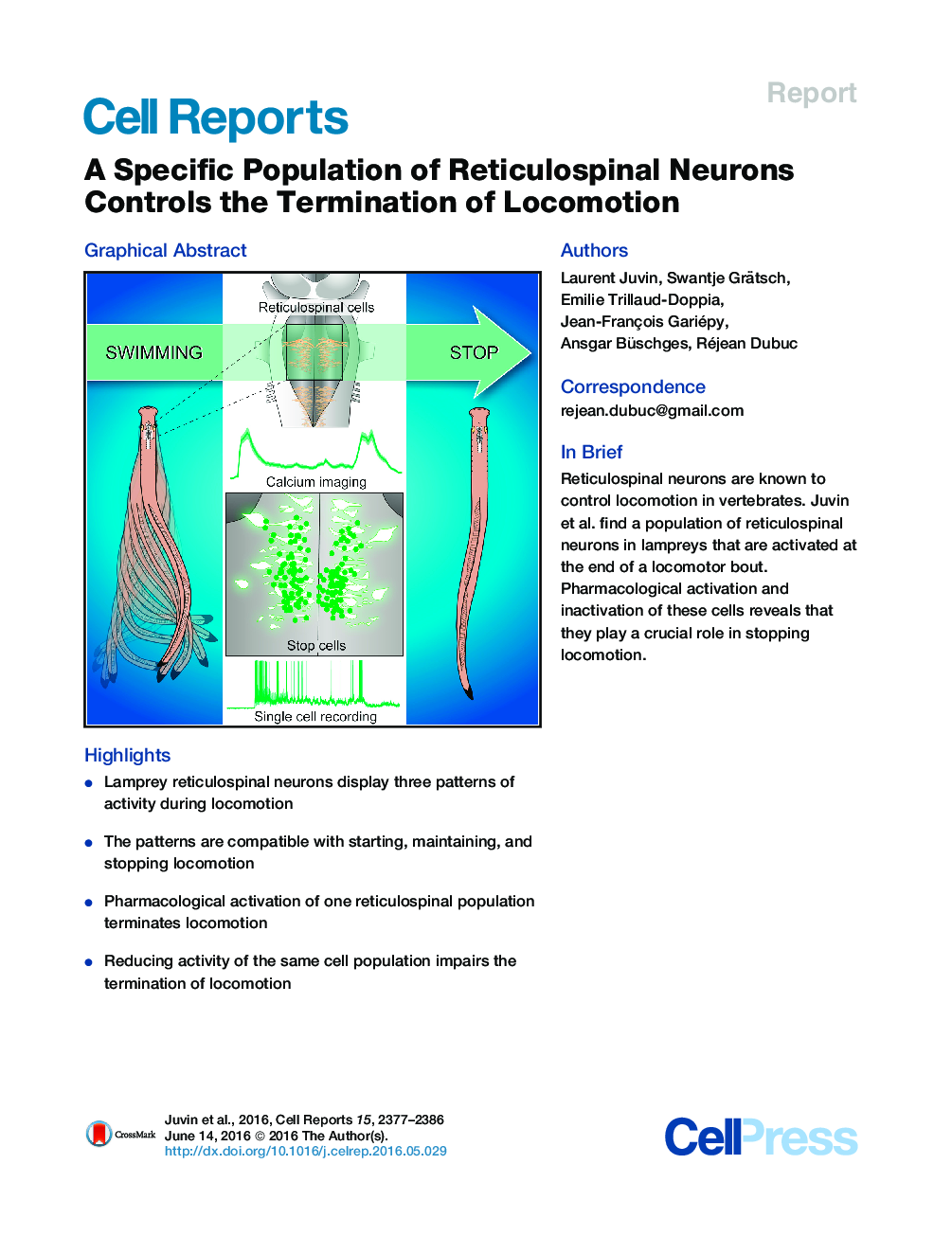| Article ID | Journal | Published Year | Pages | File Type |
|---|---|---|---|---|
| 2038959 | Cell Reports | 2016 | 10 Pages |
•Lamprey reticulospinal neurons display three patterns of activity during locomotion•The patterns are compatible with starting, maintaining, and stopping locomotion•Pharmacological activation of one reticulospinal population terminates locomotion•Reducing activity of the same cell population impairs the termination of locomotion
SummaryLocomotion requires the proper sequencing of neural activity to start, maintain, and stop it. Recently, brainstem neurons were shown to specifically stop locomotion in mammals. However, the cellular properties of these neurons and their activity during locomotion are still unknown. Here, we took advantage of the lamprey model to characterize the activity of a cell population that we now show to be involved in stopping locomotion. We find that these neurons display a burst of spikes that coincides with the end of swimming activity. Their pharmacological activation ends ongoing swimming, whereas the inactivation of these neurons dramatically impairs the rapid termination of swimming. These neurons are henceforth referred to as stop cells, because they play a crucial role in the termination of locomotion. Our findings contribute to the fundamental understanding of motor control and provide important details about the cellular mechanisms involved in locomotor termination.
Graphical AbstractFigure optionsDownload full-size imageDownload as PowerPoint slide
